Opinion & Analysis
A lob wedge is the most dangerous club in your bag—and not in a good way
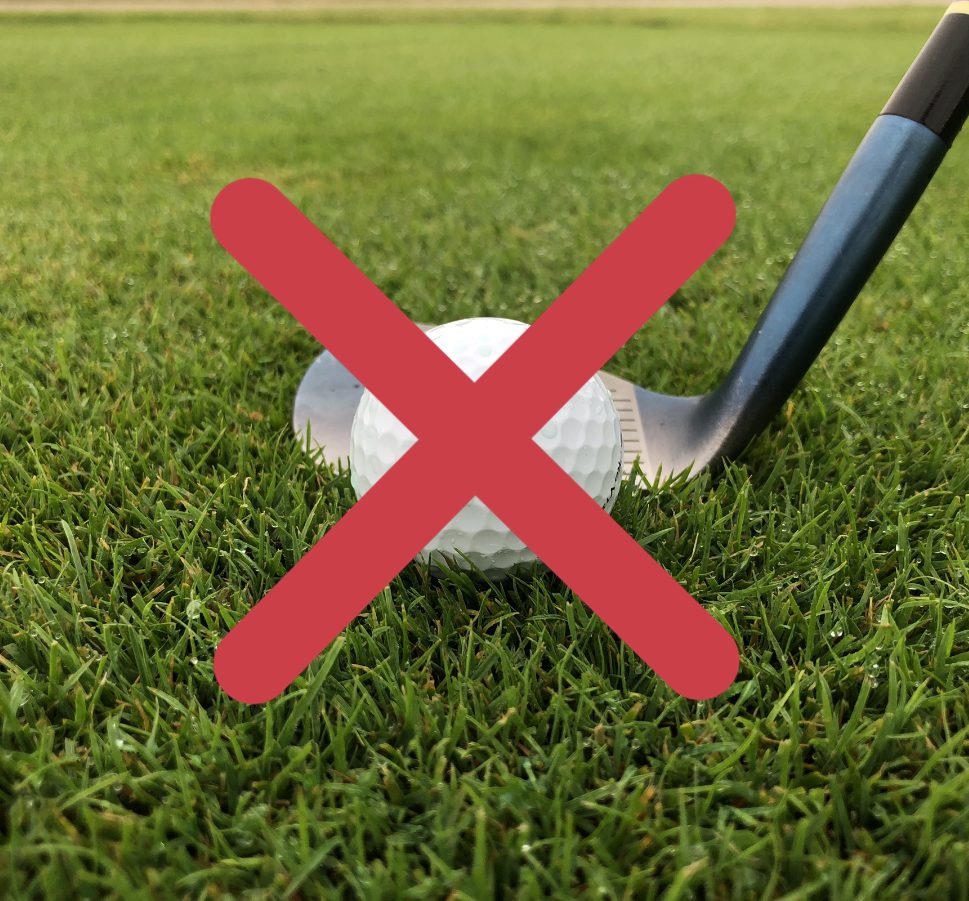
For professional golfers, a 60-degree lob wedge around the green could be classified as a surgical scalpel. Many pros—most notably Phil Mickelson—have built their reputations on the ability to hit miraculous recovery shots with these higher-lofted clubs. Phil has even gone as far as carrying a 64-degree wedge for extreme situations where it might come in handy.
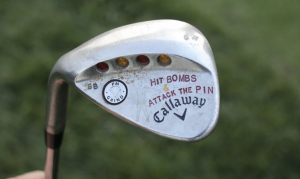
For regular golfers though, higher-lofted wedges can end up being anything but scalpel-like, unless you plan on using one to shred your scorecard after the round. Higher lofted wedges can become a massive liability because of their limited margin for error and the speed at which they are swung. This is also why we see so many people trying to innovate in the wedge market—small changes for regular golfers can make a noticeable difference.
The benefits and dangers of the lob wedge
Being able to effectively use a lob wedge can save a lot of shots around the green, especially when faced with a short-sided up and down or a difficult buried lie, but the hardest part of an open-faced lob wedge shot is repeatability. It’s why you can feel like a hero on one hole, and a complete failure on the next—because the ball ended up exactly where it started…or it ends up on the other side of the green…
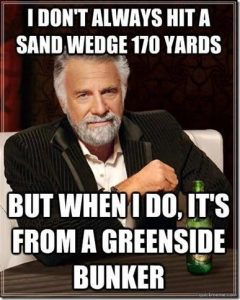
We’ve all done it!
Professionals at the highest level have the benefit of hitting these shots countless times in practice over and over, not just at their home course but week to week in varying conditions on different grass types. Most golfers don’t have this luxury, and without practice or understanding the dynamics of hitting the shot properly, the failure rate goes up quickly. This is why reasonable expectations, good decision making, and simple technique changes can make a big difference.
The WHY?
Wedges with 60 degrees of loft (and even 56 in some cases) look easy to hit since they have large faces which in turn equals greater surface area to make contact but face area versus effective face area to make contact are two completely different things.
- 60° Lob wedge from address, in open playing position
- 60° Lob wedge from ground view, in open playing position
Compared to a club with less loft, the most extreme being a driver, there is a smaller effective area to make contact and transfer energy to the ball, and beyond the transfer of energy, any club that has an effective loft of more than 50 degrees at impact will be more difficult to control in less than perfect conditions since the coefficient of friction decreases. That means you have less control over launch parameters including spin, which on short shots is one of the biggest components to stop the ball close to the intended target.
Solutions to your wedge problem
This one is the most obvious, but it’s also the least exciting: practice. By dedicating valuable practice time to the short game, you can quickly see improvements. Practice helps ingrain “feels” in your technique and also helps build up the knowledge to analyze ground conditions and lies to know which club to hit and how to play the shot.

The second option is a new wedge—come on, who doesn’t want a new wedge? Whether it be based on loft, bounce, or sole configuration, getting set up with the right tools can make a world of difference, especially if what you are using now is ill-fit to your game. If you really struggle with the short shots around the green and are willing to admit that practice isn’t an option, I highly recommend trying a specialty club designed to make the game easier. I know it’s not the “sexy” option but something like the Cutter CTR1 wedge: Cutter wedge -here to help, or a Square Strike wedge for chipping can make golf fun and easier.
Learning to hit different shots, and making simple changes to how you approach the hole can make a huge difference very quickly to your game. This can involve choosing to hit more low running square faced shots with lower lofted-clubs like a 9 or 8-iron, or if you are still trying to be as aggressive as possible, learning to hit delofted shots with your higher lofted wedges which can also help create more spin. If possible, taking a short game lesson with a teacher can be truly game-changing with a few simple technique adjustments.
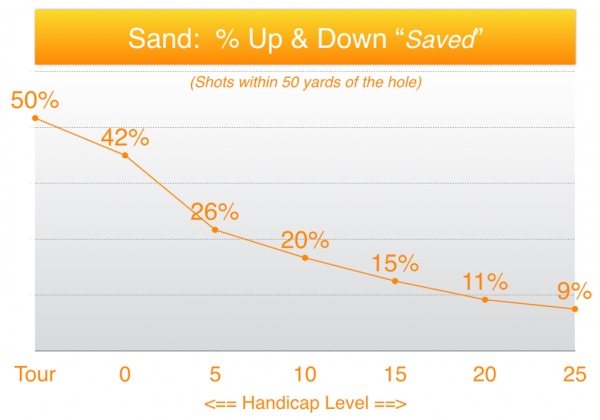
Understanding where you loose shots can help you save them
Last but not least, managing expectations can help take the pressure off when hitting shots around the green and help you make better decisions, leading to lower scores. Instead of trying to hit a “hero” flop shot over a bunker from a bad lie, aim for a larger part of the green and give yourself a better opportunity make your next shot—again not a magic cure, but if you do this a few more times in a round of golf, you can turn those wedges into weapons—and not weapons of self-destruction.
- LIKE655
- LEGIT143
- WOW31
- LOL44
- IDHT20
- FLOP49
- OB27
- SHANK333
19th Hole
Vincenzi’s LIV Golf Singapore betting preview: Course specialist ready to thrive once again

After another strong showing in Australia, LIV Golf will head to Sentosa Golf Club in Singapore looking to build off of what was undoubtedly their best event to date.
Sentosa Golf Club sits on the southern tip of Singapore and is one of the most beautiful courses in the world. The course is more than just incredible scenically; it was also rated 55th in Golf Digest’s top-100 courses in 2022-2023 and has been consistently regarded as one of the best courses in Asia. Prior to being part of the LIV rotation, the course hosted the Singapore Open every year since 2005.
Sentosa Golf Club is a par 71 measuring 7,406 yards. The course will require precise ball striking and some length off the tee. It’s possible to go low due to the pristine conditions, but there are also plenty of hazards and difficult spots on the course that can bring double bogey into play in a hurry. The Bermudagrass greens are perfectly manicured, and the course has spent millions on the sub-air system to keep the greens rolling fast. I spoke to Asian Tour player, Travis Smyth, who described the greens as “the best [he’s] ever played.”
Davis Love III, who competed in a Singapore Open in 2019, also gushed over the condition of the golf course.
“I love the greens. They are fabulous,” the 21-time PGA Tour winner said.
Love III also spoke about other aspects of the golf course.
“The greens are great; the fairways are perfect. It is a wonderful course, and it’s tricky off the tee.”
“It’s a long golf course, and you get some long iron shots. It takes somebody hitting it great to hit every green even though they are big.”
As Love III said, the course can be difficult off the tee due to the length of the course and the trouble looming around every corner. It will take a terrific ball striking week to win at Sentosa Golf Club.
In his pre-tournament press conference last season, Phil Mickelson echoed many of the same sentiments.
“To play Sentosa effectively, you’re going to have a lot of shots from 160 to 210, a lot of full 6-, 7-, 8-iron shots, and you need to hit those really well and you need to drive the ball well.”
Golfers who excel from tee to green and can dial in their longer irons will have a massive advantage this week.
Stat Leaders at LIV Golf Adelaide:
Fairways Hit
1.) Louis Oosthuizen
2.) Anirban Lahiri
3.) Jon Rahm
4.) Brendan Steele
5.) Cameron Tringale
Greens in Regulation
1.) Brooks Koepka
2.) Brendan Steele
3.) Dean Burmester
4.) Cameron Tringale
5.) Anirban Lahiri
Birdies Made
1.) Brendan Steele
2.) Dean Burmester
3.) Thomas Pieters
4.) Patrick Reed
5.) Carlos Ortiz
LIV Golf Individual Standings:
1.) Joaquin Niemann
2.) Jon Rahm
3.) Dean Burmester
4.) Louis Oosthuizen
5.) Abraham Ancer
LIV Golf Team Standings:
1.) Crushers
2.) Legion XIII
3.) Torque
4.) Stinger GC
5.) Ripper GC
LIV Golf Singapore Picks
Sergio Garcia +3000 (DraftKings)
Sergio Garcia is no stranger to Sentosa Golf Club. The Spaniard won the Singapore Open in 2018 by five strokes and lost in a playoff at LIV Singapore last year to scorching hot Talor Gooch. Looking at the course setup, it’s no surprise that a player like Sergio has played incredible golf here. He’s long off the tee and is one of the better long iron players in the world when he’s in form. Garcia is also statistically a much better putter on Bermudagrass than he is on other putting surfaces. He’s putt extremely well on Sentosa’s incredibly pure green complexes.
This season, Garcia has two runner-up finishes, both of them being playoff losses. Both El Camaleon and Doral are courses he’s had success at in his career. The Spaniard is a player who plays well at his tracks, and Sentosa is one of them. I believe Sergio will get himself in the mix this week. Hopefully the third time is a charm in Singapore.
Paul Casey +3300 (FanDuel)
Paul Casey is in the midst of one of his best seasons in the five years or so. The results recently have been up and down, but he’s shown that when he’s on a golf course that suits his game, he’s amongst the contenders.
This season, Casey has finishes of T5 (LIV Las Vegas), T2 (LIV Hong Kong), and a 6th at the Singapore Classic on the DP World Tour. At his best, the Englishman is one of the best long iron players in the world, which makes him a strong fit for Sentosa. Despite being in poor form last season, he was able to fire a Sunday 63, which shows he can low here at the course.
It’s been three years since Casey has won a tournament (Omega Dubai Desert Classic in 2021), but he’s been one of the top players on LIV this season and I think he can get it done at some point this season.
Mito Pereira +5000 (Bet365)
Since Mito Pereira’s unfortunate demise at the 2022 PGA Championship, he’s been extremely inconsistent. However, over the past few months, the Chilean has played well on the International Series as well as his most recent LIV start. Mito finished 8th at LIV Adelaide, which was his best LIV finish this season.
Last year, Pereira finished 5th at LIV Singapore, shooting fantastic rounds of 67-66-66. It makes sense why Mito would like Sentosa, as preeminent ball strikers tend to rise to the challenge of the golf course. He’s a great long iron player who is long and straight off the tee.
Mito has some experience playing in Asia and is one of the most talented players on LIV who’s yet to get in the winner’s circle. I have questions about whether or not he can come through once in contention, but if he gets there, I’m happy to roll the dice.
Andy Ogletree +15000 (DraftKings)
Andy Ogletree is a player I expected to have a strong 2024 but struggled early in his first full season on LIV. After failing to crack the top-25 in any LIV event this year, the former U.S. Amateur champion finally figured things out, finished in a tie for 3rd at LIV Adelaide.
Ogletree should be incredible comfortable playing in Singapore. He won the International Series Qatar last year and finished T3 at the International Series Singapore. The 26-year-old was arguably the best player on the Asian Tour in 2023 and has been fantastic in the continent over the past 18 months.
If Ogletree has indeed found form, he looks to be an amazing value at triple-digit odds.
- LIKE3
- LEGIT3
- WOW1
- LOL2
- IDHT0
- FLOP2
- OB0
- SHANK0
Opinion & Analysis
Ryan: Lessons from the worst golf instructor in America

In Tampa, there is a golf course that boasts carts that do not work, a water range, and a group of players none of which have any chance to break 80. The course is overseen by a staff of crusty men who have succeeded at nothing in life but ending up at the worst-run course in America. However, this place is no failure. With several other local courses going out of business — and boasting outstanding greens — the place is booked full.
While I came for the great greens, I stayed to watch our resident instructor; a poor-tempered, method teacher who caters to the hopeless. At first, it was simply hilarious. However, after months of listening and watching, something clicked. I realized I had a front-row seat to the worst golf instructor in America.
Here are some of my key takeaways.
Method Teacher
It is widely accepted that there are three types of golf instructors: system teachers, non-system teachers, and method teachers. Method teachers prescribe the same antidote for each student based on a preamble which teachers can learn in a couple day certification.
Method teaching allows anyone to be certified. This process caters to the lowest caliber instructor, creating the illusion of competency. This empowers these underqualified instructors with the moniker of “certified” to prey on the innocent and uninformed.
The Cult of Stack and Jilt
The Stack and Tilt website proudly boasts, “A golfer swings his hands inward in the backswing as opposed to straight back to 1) create power, similar to a field goal kicker moving his leg in an arc and 2) to promote a swing that is in-to-out, which produces a draw (and eliminates a slice).”
Now, let me tell you something, there is this law of the universe which says “energy can either be created or destroyed,” so either these guys are defying physics or they have no idea what they are taking about. Further, the idea that the first move of the backswing determines impact is conjecture with a splash of utter fantasy.
These are the pontifications of a method — a set of prescriptions applied to everyone with the hope of some success through the placebo effect. It is one thing for a naive student to believe, for a golf instructor to drink and then dispel this Kool-Aid is malpractice.
Fooled by Randomness
In flipping a coin, or even a March Madness bet, there is a 50-50 chance of success. In golf, especially for new players, results are asymmetric. Simply put: Anything can happen. The problem is that when bad instructors work with high handicappers, each and every shot gets its own diagnosis and prescription. Soon the student is overwhelmed.
Now here’s the sinister thing: The overwhelming information is by design. In this case, the coach is not trying to make you better, they are trying to make you reliant on them for information. A quasi Stockholm syndrome of codependency.
Practice
One of the most important scientists of the 20th century was Ivan Pavlov. As you might recall, he found that animals, including humans, could be conditioned into biological responses. In golf, the idea of practice has made millions of hackers salivate that they are one lesson or practice session from “the secret.”
Sunk Cost
The idea for the worst golf instructor is to create control and dependency so that clients ignore the sunk cost of not getting better. Instead, they are held hostage by the idea that they are one lesson or tip away from unlocking their potential.
Cliches
Cliches have the effect of terminating thoughts. However, they are the weapon of choice for this instructor. Add some hyperbole and students actually get no information. As a result, these players couldn’t play golf. When they did, they had no real scheme. With no idea what they are doing, they would descend into a spiral of no idea what to do, bad results, lower confidence, and running back to the lesson tee from more cliches.
The fact is that poor instruction is about conditioning players to become reliant members of your cult. To take away autonomy. To use practice as a form of control. To sell more golf lessons not by making people better but through the guise that without the teacher, the student can never reach their full potential. All under the umbrella of being “certified” (in a 2-day course!) and a melee of cliches.
This of course is not just happening at my muni but is a systemic problem around the country and around the world, the consequences of which are giving people a great reason to stop playing golf. But hey, at least it’s selling a lot of golf balls…
- LIKE17
- LEGIT2
- WOW0
- LOL4
- IDHT1
- FLOP0
- OB0
- SHANK19
19th Hole
Vincenzi’s 2024 Zurich Classic of New Orleans betting preview

The PGA TOUR heads to New Orleans to play the 2023 Zurich Classic of New Orleans. In a welcome change from the usual stroke play, the Zurich Classic is a team event. On Thursday and Saturday, the teams play best ball, and on Friday and Sunday the teams play alternate shot.
TPC Louisiana is a par 72 that measures 7,425 yards. The course features some short par 4s and plenty of water and bunkers, which makes for a lot of exciting risk/reward scenarios for competitors. Pete Dye designed the course in 2004 specifically for the Zurich Classic, although the event didn’t make its debut until 2007 because of Hurricane Katrina.
Coming off of the Masters and a signature event in consecutive weeks, the field this week is a step down, and understandably so. Many of the world’s top players will be using this time to rest after a busy stretch.
However, there are some interesting teams this season with some stars making surprise appearances in the team event. Some notable teams include Patrick Cantlay and Xander Schauffele, Rory McIlroy and Shane Lowry, Collin Morikawa and Kurt Kitayama, Will Zalatoris and Sahith Theegala as well as a few Canadian teams, Nick Taylor and Adam Hadwin and Taylor Pendrith and Corey Conners.
Past Winners at TPC Louisiana
- 2023: Riley/Hardy (-30)
- 2022: Cantlay/Schauffele (-29)
- 2021: Leishman/Smith (-20)
- 2019: Palmer/Rahm (-26)
- 2018: Horschel/Piercy (-22)
- 2017: Blixt/Smith (-27)
2024 Zurich Classic of New Orleans Picks
Tom Hoge/Maverick McNealy +2500 (DraftKings)
Tom Hoge is coming off of a solid T18 finish at the RBC Heritage and finished T13 at last year’s Zurich Classic alongside Harris English.
This season, Hoge is having one of his best years on Tour in terms of Strokes Gained: Approach. In his last 24 rounds, the only player to top him on the category is Scottie Scheffler. Hoge has been solid on Pete Dye designs, ranking 28th in the field over his past 36 rounds.
McNealy is also having a solid season. He’s finished T6 at the Waste Management Phoenix Open and T9 at the PLAYERS Championship. He recently started working with world renowned swing coach, Butch Harmon, and its seemingly paid dividends in 2024.
Keith Mitchell/Joel Dahmen +4000 (DraftKings)
Keith Mitchell is having a fantastic season, finishing in the top-20 of five of his past seven starts on Tour. Most recently, Mitchell finished T14 at the Valero Texas Open and gained a whopping 6.0 strokes off the tee. He finished 6th at last year’s Zurich Classic.
Joel Dahmen is having a resurgent year and has been dialed in with his irons. He also has a T11 finish at the PLAYERS Championship at TPC Sawgrass which is another Pete Dye track. With Mitchell’s length and Dahmen’s ability to put it close with his short irons, the Mitchell/Dahmen combination will be dangerous this week.
Taylor Moore/Matt NeSmith +6500 (DraftKings)
Taylor Moore has quickly developed into one of the more consistent players on Tour. He’s finished in the top-20 in three of his past four starts, including a very impressive showing at The Masters, finishing T20. He’s also finished T4 at this event in consecutive seasons alongside Matt NeSmith.
NeSmith isn’t having a great 2024, but has seemed to elevate his game in this format. He finished T26 at Pete Dye’s TPC Sawgrass, which gives the 30-year-old something to build off of. NeSmith is also a great putter on Bermudagrass, which could help elevate Moore’s ball striking prowess.
- LIKE8
- LEGIT3
- WOW1
- LOL1
- IDHT0
- FLOP3
- OB1
- SHANK2
-

 19th Hole2 weeks ago
19th Hole2 weeks agoJustin Thomas on the equipment choice of Scottie Scheffler that he thinks is ‘weird’
-

 19th Hole2 weeks ago
19th Hole2 weeks ago‘Absolutely crazy’ – Major champ lays into Patrick Cantlay over his decision on final hole of RBC Heritage
-

 19th Hole3 weeks ago
19th Hole3 weeks agoTwo star names reportedly blanked Jon Rahm all week at the Masters
-

 19th Hole2 weeks ago
19th Hole2 weeks agoReport: LIV Golf identifies latest star name they hope to sign to breakaway tour
-

 19th Hole3 weeks ago
19th Hole3 weeks agoNeal Shipley presser ends in awkward fashion after reporter claims Tiger handed him note on 8th fairway
-

 19th Hole2 weeks ago
19th Hole2 weeks agoBrandel Chamblee has ‘no doubt’ who started the McIlroy/LIV rumor and why
-

 19th Hole1 week ago
19th Hole1 week agoLET pro gives detailed financial breakdown of first week on tour…and the net result may shock you
-

 Equipment2 weeks ago
Equipment2 weeks agoJason Day on his recent switch into Srixon ZX5 and ZX7 Mk II irons

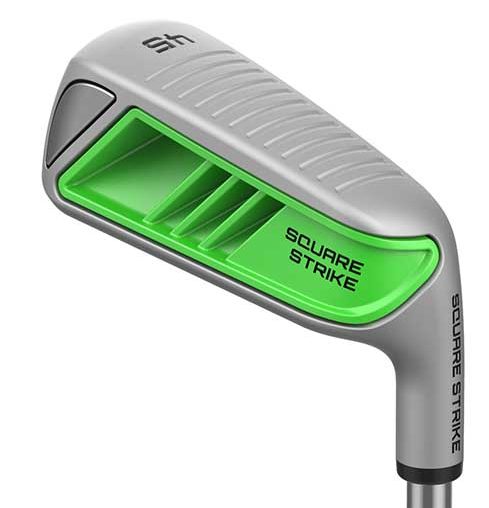
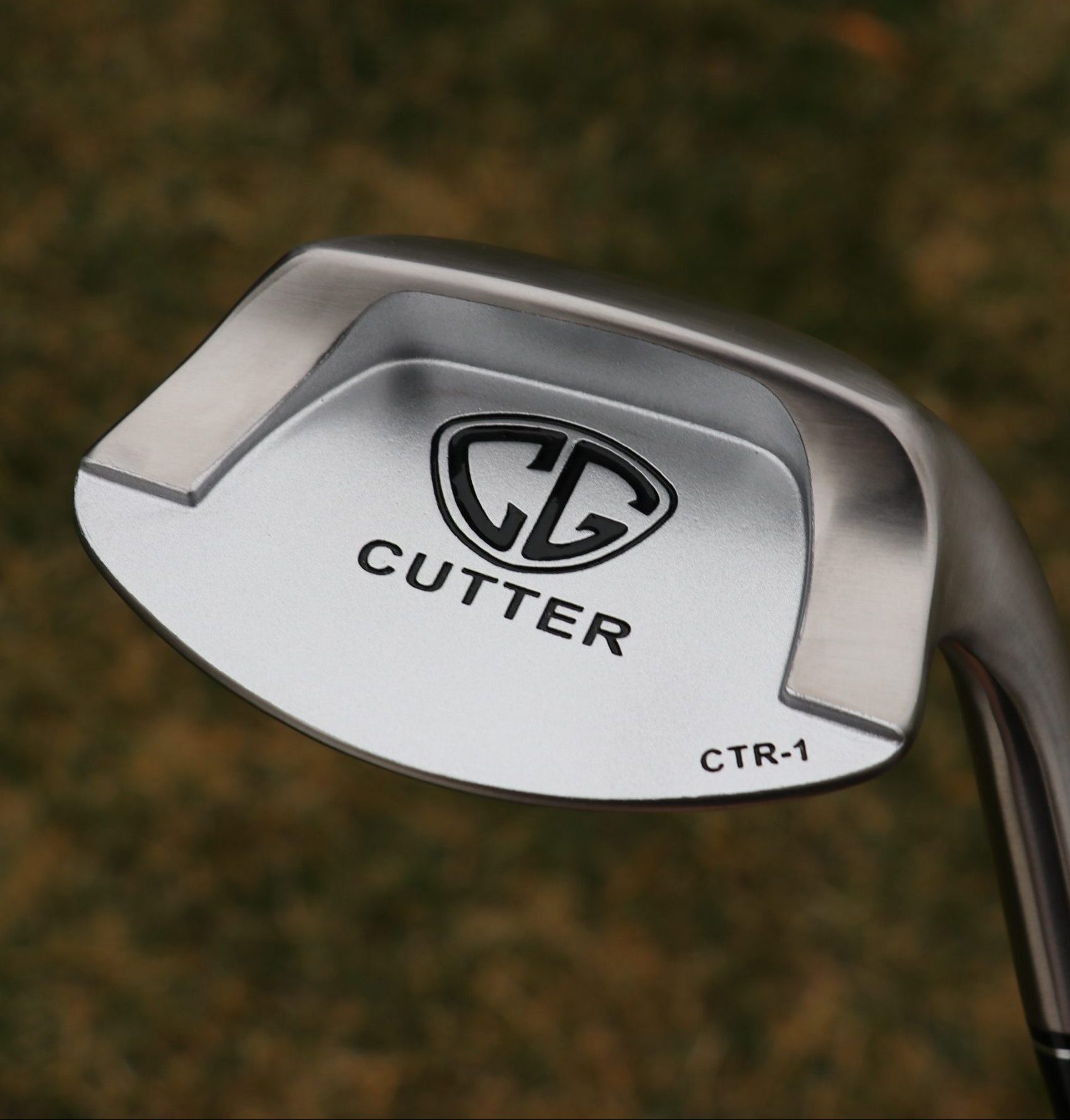
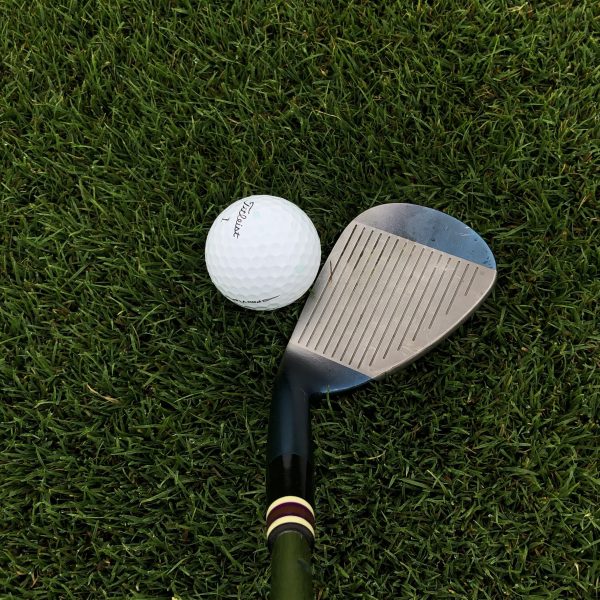
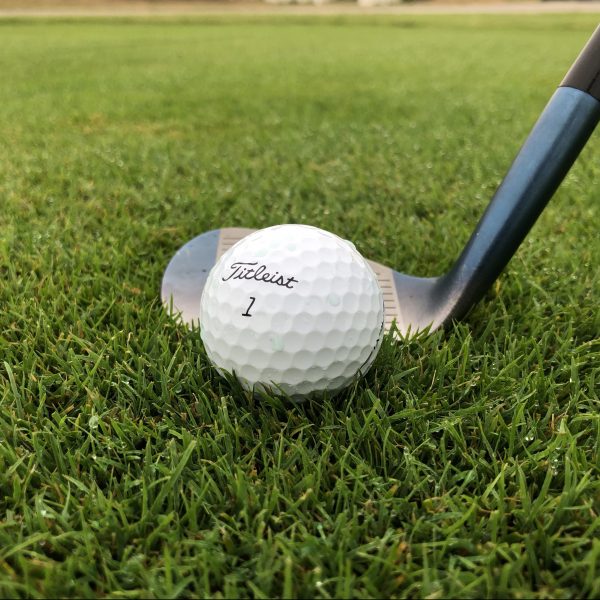

























Pingback: The Different Types Of Golf Clubs: The Sand Wedge – The Annika Academy
Pingback: Unveiling the Secrets of Golf Wedges: Understanding the Different Degrees – PrestwickCountryClub.net
Pingback: What Degree Is An Approach Wedge? - Longleaf Golf
Pingback: When To Use Irons And Wedges On The Golf Course – The Annika Academy
Pingback: Purchasing Your First Set Of Golf Irons – FAQs
Pingback: From Sunday bags to club fitting: My favorite pieces of 2020 – GolfWRX
steve jenney
Oct 17, 2020 at 9:54 am
When I teach and I find a lot wedge in a 20 handicappers bag I say “there are only two people I know that can use this club” GOD and Tiger Woods! Michelson is so over rated its disgusting! Put in another hybrid or another wedge. 46, 49 52 and 56 at most.
Samsam
Jul 12, 2021 at 11:30 pm
It is scary you actually teach someone.
Dennis Beach
Aug 8, 2020 at 10:05 am
I usually use my 60* to make full swing shots. Trying to finesse a lob with a half swing is better left to the pros. Greenside bunkers where the green is higher than the sand is my go to 60* shot, especially if the green is eye level when you are in the bunker, as it requires a full swing to get up and on most of the time. My 56* is my all around chip/pitch club within 50 yards of the green. If the ground is level, I will use a pitching(46*)wedge to bump and run. I carry a 52*, but use mostly on full shots inside 100 yards of the green.
christian
Aug 1, 2020 at 1:33 pm
Hitting a lob wedge doesn’t need to be some big mysterious event. It’s the same as the rest of the irons in you bag. Keep your hands ahead of the ball at impact and you can hit a lob wedge just as effectively as a 4 iron. I don’t care if you’re hitting a one hop and stop pitch or a high soft lob, keep your shaft leaning forward and hands ahead of the ball at impact and you’ll hit 90% of them just fine. Everyone gets freaked out about 60 degree wedges for some reason and in the end, it’s just a club that needs a little practice to figure out…but then again, don’t all of your clubs need that.
ChipNRun
Jul 30, 2020 at 7:29 pm
Two things to decide on LWs:
* Can you hit a 60* reliably? If not, go with a 58*.
* Whether it’s a 60* or 58*, you need to pull firmly through the shot with the left side. If not, you’ll come up short a lot on your LW.
Once you resolve these two points, remember: a LW is not an all-occasions club. If you hit a lob into a green with a false front, don’t be surprised if the ball spins back to your feet. In this case, go to a chip and run if you’re going uphill slightly.
I saw this happen several times from the U.S. women in the 2014 Curtis Cup. The U.S. would lob into the false front and die, or spin back, while the British/Irish women would roll a chip-and-run in close for an easy tap-in. (Fortunately, the US women were dropping iron-shot darts into the green from the fairway, and eventually won out.)
Par-Tee-Animal
Jul 29, 2020 at 9:52 pm
Honestly, I think most of Ryan’s work is just product of boredom. This article is so lazily written that the only data he provides is a percentage of “sand saves” with no data on what kind of wedge was used during those attempted “saves”.
Also on a similarly and ironic note, he includes a meme about skulling a sand wedge 170 yards from a bunker. What degree is a sand wedge again? Oh that’s right it’s between 54-57 degrees, so he’s basically invalidated his argument in one meme.
How often are you going to open the face of a 60* lob wedge in a bunker or around the green? Hardly ever, want to know why? Because it has 60* of loft unlike the 56* everyone opens up and sweeps through the bunker with that has the added repercussion of higher bounce which leads to more skulled shots than a 60* with lower bounce.
Now are lob wedges for everyone? Certainly not, there are guys like Lee Trevino who only carried a wedge as high as 54* and had a successful career. But for someone who want a little more confidence to land a nice soft shot onto the green over a bunker or even a water hazard they’re a nice tool to have. Why work on building a whole new swing for one shot when you can buy a club that effectively has the same mechanics?
Ryan, I highly encourage you to rethink your Op-Ed articles as they’re basically non-educated opinions by someone who speed out articles that read like Buzzfeed headlines.
I saw your latest post about club makers and gourmet chefs being similar, maybe it’s time for you to hang up the carry bag and take up cooking. At least that way everything is already measured out for you so you don’t have to try to use any critical thinking which you seem to lack.
PATRICK CARROLL
Jul 29, 2020 at 3:23 pm
When i was a 25 handicap (maybe more that’s just a guess), I used a lob wedge often and ineffectively. Probably rarely at the right time. It probably didn’t help my score like using a 9 iron to bump and run would have. But it was fun.
I’m officially a 12 handicap now. The big difference is I know the shots I CAN hit and know the shots I SHOULD hit. That combination means i spend most of my time using my 54* with great success. But, when I need to play a high, short, soft shot, I can do it with moderate success. Certainly much better than I could with an open faced 54 or lower.
In short. Know the FEW shots and scenarios you NEED a LW and be diligent in using the club ONLY for those shots.
Evan
Jul 27, 2020 at 12:08 pm
Why, when facing a short shot that needs to fly high and land softly, wouldn’t a LW be helpful, regardless of handicap- in fact probably more helpful to a less skilled player?
JackCi
Jul 27, 2020 at 8:15 am
This is a dumb article. I use my 60* a lot and also any other club down to a 7 even around the green. The 60* is nothing short of s godsend around the green and one of the easiest clubs to hit. Whoever wrote this is a hack and should retire.
BWeez
Jul 25, 2020 at 2:34 pm
A 60 degree wedge is useless and isn’t worthy of the slot in the bag, you’d be better off with a driving iron. My 56 degree is the most effective club in my bag and I use it in a million different situations. It is also the club I practice with the most. Anyone who puts anything above a 48 degree in their hand and hasn’t got serious reps with it is hoping to get lucky.
Justin
Jul 21, 2020 at 3:58 pm
I think this article has some credence. I have a 60 degree wedge and used many different kinds of grinds and bounces in the past. It is in the grinds and bounces that I think can benefit each player the most. Once the player understands what is best utilized for them can the wedge be beneficial. I have though found lately I have gravitated to more my 56 and 52 on standard wedge shots and pitches and only using my 60 in specialty situations. It is quite a low bounce so it comes in handy on tight lies and firm bunkers. It has a decent amount of heal and toe relief. I am a low single digit handicap. Not sure if thats any relevance to the situation but I always used to just use a 60* form anywhere. Have found since I expanded the 56 and 52 it has allowed me greater control over being able to keep the flight down and get the ball running on the green faster.
Bas
Jul 20, 2020 at 5:13 am
I’m a 38 handicap and have a 60 degree Cleveland CBX in the bag. It is incredibly easy to hit, more so than my SW and AW (Callaway Rogue). I just put the ball in the middle of my stance, weight 50/50 and swing through the ball nice and easy. Nothing fancy. Love it from the sand as well.
Although at my level I have never even thought about ‘opening up’ a 60 degree wedge. Why on earth would you do that? Isn’t the point of a 60 degree that you don’t have to open up your 54 degree? i would think that 60 would be enough.
nomad golfer
Jul 20, 2020 at 12:01 am
I use a Lovett chipper wedge for getting out of sand traps otherwise it just stays in the bag. My reliable short range club is a sand wedge which I don’t use in sand !.
Yeah it’s a funny game.
Jonas Henderson
Jul 19, 2020 at 9:05 pm
Exactly what audience are you addressing here? A lob wedge is an entirely legitimate tool for many serious golfers. I bet among single digit hcp players, most would say it’s indispensable. Among mid-cappers, I bet a good proportion wield it with decent competence, especially, if they use it for standard chips and pitches, and not hero shots.
I’d wager the 3w has destroyed more rounds than LWs ever have.
gwelfgulfer
Jul 29, 2020 at 11:46 am
I’d easily take that bet. The LW has far more potential use in a round than a 3wd does for the vast majority. More so if they aren’t hitting a good % of GIR’s and blindly grab the 60* for each and every situation.
Simms
Jul 19, 2020 at 10:26 am
If you play public golf I find it a lot easier to find a place to practice 58 degree lob and chip shots then any other shot…almost no one in the public course arena has a 100 yard grass to a real green practice area and for most of us 75% of driving ranges are mats (almost a waste of time for short iron and fairway wood practice). So I keep a 58 in my bag because I have practiced with it till it works.
Tom Duckworth
Jul 19, 2020 at 10:15 am
I think Phil made the idea of a lob wedge popular for many golfers and that has probably hurt their games. In many weekend golfers minds their idea of the short game is to hit a high shot that lands close to the hole and stops, no matter what the shot really calls for. I guess a low running chip isn’t as sexy as a high lob but I’ll take closer to the hole any day.
Matt70
Jul 18, 2020 at 1:35 pm
I only carry 46° and then 54°. Keep it simple. +0.2 hcap
Duane Martin
Jul 18, 2020 at 1:08 pm
I still carry my Ping Eye 2+ SW instead of lob wedge…..57.5 degrees, double bevel sole, 64.5 degrees of lie angle.
Best “SW” ever made imo…. easy to flop, easy to hit 80 yards and easy to hit all green side bunker shots with.
But like everyone else has said….. practice goes a long way towards perfection.
Rascal
Jul 18, 2020 at 12:04 pm
I agree, don’t see the need to take up the bag spot when I can use the 3i instead.
Mac
Jul 18, 2020 at 3:43 am
Technique is king!
gwelfgulfer
Jul 19, 2020 at 2:34 pm
Pretty well this. Golf is hard, even harder to play very well and the vast majority of players in the world have had little to no actual quality instruction, little to no practice (or practice poorly because of lack of knowledge) or actual drive/ability to get better.
Dicklaus
Jul 17, 2020 at 7:06 pm
I’ve been a Cat 1 golfer for the best part of 50 years. The whole basis of the short game is to get the ball on the ground as soon as possible – unless you’re forced otherwise.
I tried a LW once and realised it was an unreliable club – unless I was prepared to put in a lot of practice.
It was also evident that a better strike, and the same result as a LW, was possible by opening up my 54 SI.
In other words, the shot I’d learnt as a kid & used for decades.
Different strokes for different folks!
Dan
Jul 17, 2020 at 6:13 pm
I was a scratch when 95% of players didn’t carry a lob wedge, myself included. You practice enough you can hit anything.
Richard Pym
Jul 17, 2020 at 4:39 pm
For me it’s all about course management a good player knows most of the time what type of shot to hit around the green. I think that the slightly higher handicappers sometimes try to hit the miracle Mickelson esq flops shots they have seen from TV rather than taking the easier shot for say bogey and walking away with 1 or 2 points rather than a blob.
Bob Jones
Jul 17, 2020 at 3:50 pm
My 60-degree wedge is calibrated to certain distances for pitching and for chipping. I have practiced with it around the green and am familiar with what I can do with it and what I can’t. It’s a big stroke-saving club for me.
KP
Jul 17, 2020 at 2:47 pm
I never thought I would see an endorsement for gimmicks like the Square Strike wedge on GolfWrx, a website that is supposedly geared towards serious golfers. I’m stunned.
Acemandrake
Jul 17, 2020 at 1:13 pm
56 is easier to use than 58 or 60. It’s also more versatile.
For me, there’s just less thought involved with the 56.
David
Jul 17, 2020 at 12:46 pm
I could probably hit 75% of my 60 degree shots with my 56, but still would play it more often in a round than I would a 3 wood. For my set I have put a 60 in the bag, lowered the loft on my 5 wood, and dumped the 3 wood to stay at 14 clubs. Newer 60s seem to have better weight distribution and easier to hit than my older versions did but that’s just my opinion. I think it comes down to understanding your capability when picking your target landing area, but its doesn’t seem any harder to hit to me. I understand I’m not Phil.
Sean Foster-Nolan
Jul 17, 2020 at 12:44 pm
I disagree. I have both a 58 and 62 degree. They are real stroke savers for me.
DougE
Jul 17, 2020 at 11:38 am
I too have to disagree, with respect.
I feel this article might be better published on a site where the majority of players are mid to higher handicappers. Not WRX. The article itself is not totally off base in the opinions presented, though it is quite condescending if you are lumping good players into the equation. You don’t get to be a single digit handicap without having good control of your wedges and a somewhat thorough understanding of the design and dynamics of wedges and swings, particularly short game swings.
Personally, I could not play to the level I do without a good quality lob wedge. I use anything from a hybrid to a 58* around the greens, but 90% of the time, it is my 58. It is the most trusted short game club in my bag. Sure, I screw up with it, occasionally, just like everyone else does from time to time, but I’ll take the 90-95%, good to excellent shot, success rate I do have with it any day, over not having a LW in my bag at all. Yes, I admit, I practice and play a lot (virtually everyday), so I am very aware of how to handle it properly. But, I would also guess, that the majority of WRX readership would fall into my same category (4.8), or better. Most here are serious players of the game, not just casual golfers.
A simple qualification in the beginning of the article suggesting that it is aimed more at mid to higher handicap level golfers, and then the article has plenty of merit. JMO.
John B
Jul 17, 2020 at 11:05 am
Am 84 now – 30 years with my Ping 60 degree lob. Swing plane & speed very important. Don’t give up, just practice, practice!
Brandon
Jul 17, 2020 at 10:34 am
I think the negative feedback misses the real point Ryan is trying to make. Perhaps Ryan should change the title to “A lob wedge CAN be the most dangerous club.” It seems like the real point of it is that the club can be dangerous when trying to replicate the shots tour pros make look easy. I like using my lob wedge as much as any of you, but I wouldn’t dream of trying anything more complicated than a simple pitch shot.
Big_Church
Jul 17, 2020 at 10:30 am
I’m a 12 index and use a 60 all the time around the green, gets me out of trouble(which happens a lot) quite often. Disagree here.
Obee
Jul 17, 2020 at 10:19 am
Define your audience first. The overwhelming majority of players below a 10-handicap can wield a LW just fine, and for many players 5 and under, it’s their go-to wedge around the green.
Brian Parsons
Jul 17, 2020 at 9:54 am
I completely disagree with this. I’m a 7 index and I would be lost without my 60. Gets me out of trouble around the greens all the time. I use it almost exclusively on shorter sand shots its my go to club for a full 80-90 yard shot from the fairway. Love my 60.
Brandon
Jul 17, 2020 at 11:40 am
I agree with you completely. Sometimes I’ll chunk or blade my 60, but I do it with my 56 or my 52 as well. Definitely not going to buy an infomercial wedge just because I suck. I’d rather be a 7 with real clubs and be able to look at myself in the mirror than a 5 with clown clubs.
SV677
Jul 17, 2020 at 9:47 am
I agree, lob wedges are a disaster waiting to happen. I pretty much only use one for full shots. Even then I avoid it as much as possible. I also do not open the clubface because the ball goes 45* left (lefty) every time. I think a max of 56* is enough unless one is very skilled. Find the safe spot on the green and hope for a long putt and avoid disaster.
Alexander Thompson
Jul 17, 2020 at 9:39 am
I disagree with this idea. I think more golfers should utilize a lob wedge. It’s not necessarily about technique of hitting the ball. It’s about knowing how to set up to the shot correctly. Feet position, hand position, and ball position are the keys to hitting a lob wedge. These don’t require much practice since they are set up related. Promoting gimmicky clubs to make the game easier is a set up for failure when the solution is rather simple and allows people to have a better understanding of what the club should be doing at impact with the ball.
Skip
Jul 17, 2020 at 9:32 am
Dumb article to assume nobody is good enough to use a lob wedge.
brian
Jul 17, 2020 at 9:27 am
I stopped playing with anything higher lofted than a 56 degree. I can open the face and hit flops every bit as easily with a 56 and it has more utility, for me, than a 60.